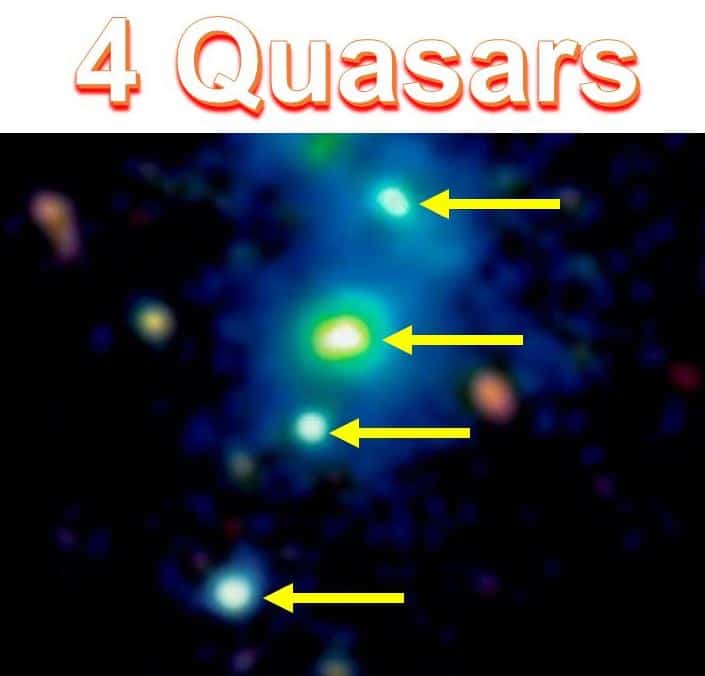Astronomers were amazed to find four closely spaced quasars embedded in a massive cloud of cool dense gas. They calculated the likelihood of such a discovery was 1-in-10-million. According to current scientific theories, they should not be there.
Finding just one quasar – a very rare, incredibly-bright core in deep space – is quite an event. Discovering four of them all near each other is just mind-boggling, scientists, from the Max-Planck Institute in Germany, the University of California Santa Cruz in the US, and ETH Zurich in Switzerland, said.
Quasars are uncommon because they are a very brief phase that every galaxy goes through, the supermassive black hole in the galaxy’s centre consumes matter at an enormously high rate.

A one-in-ten-million chance of finding 4 quasars so close to each other. (Image: Science)
The material that falls into the black hole gets super-hot, making it shine hundreds of times more brightly than its whole host galaxy.
The scientists reported in the journal Science that they found the quasar quartet while carrying out a survey using the W. M. Keck telescope near the summit of Mauna Kea in Hawaii.
The four quasars are located in the middle of a very crowded part of the early Universe, with a higher-than-average number of galaxies.
The voracious black holes are probably feeding on the cloud of cool gas.
The four quasars and their surroundings, about 10 billion light-years away, look like a galaxy cluster – a massive conglomeration of galaxies seen in our current Universe – during its formative years.
Quasars’ location doesn’t make scientific sense
According to current numerical simulations of how galaxy clusters are formed, this should occur only in areas with much hotter and less dense gas.
The scientists say their find is either a cosmic ‘fluke’, or current theories on how the largest structures in the Universe are formed need to be re-written.
They wrote in an Abstract in the journal:
“Our findings imply that the most massive structures in the distant universe have a tremendous supply (≃1011 solar masses) of cool dense (volume density ≃ 1 cm−3) gas, which is in conflict with current cosmological simulations.”
Citation: “Quasar quartet embedded in giant nebula reveals rare massive structure in distant universe,” Joseph F. Hennawi, Xavier Prochaska, Sebastiano Cantalupo and Fabrizio Arrigoni-Battaia. Science. Published 15 May, 2015. DOI: 10.1126/science.aaa5397.
